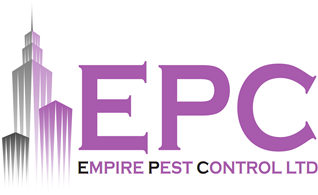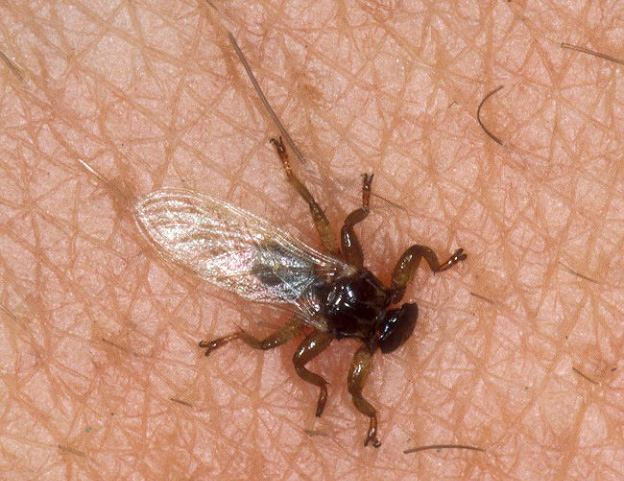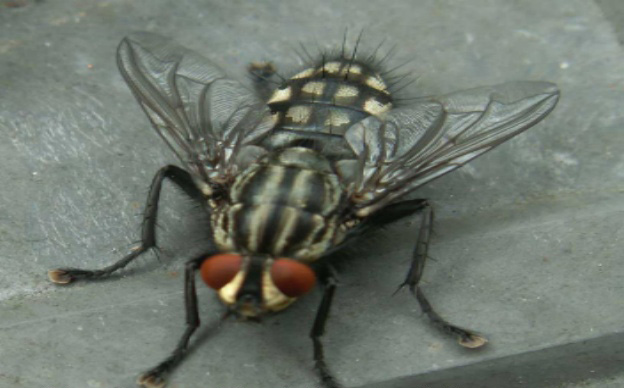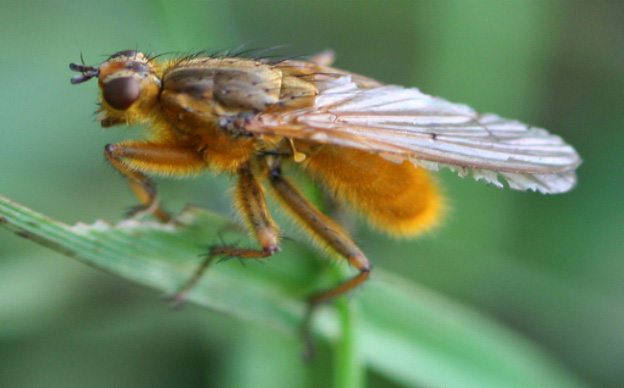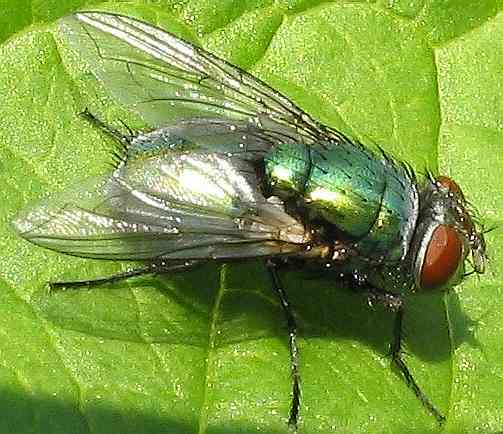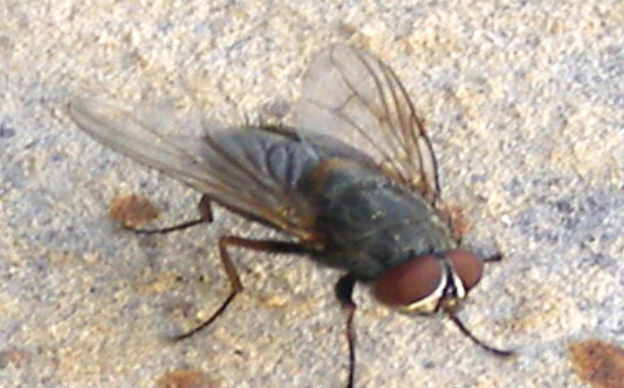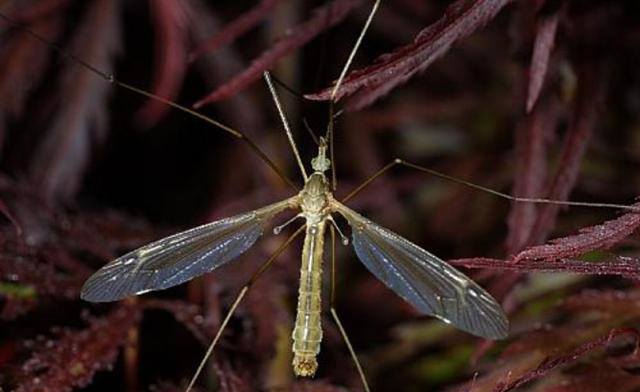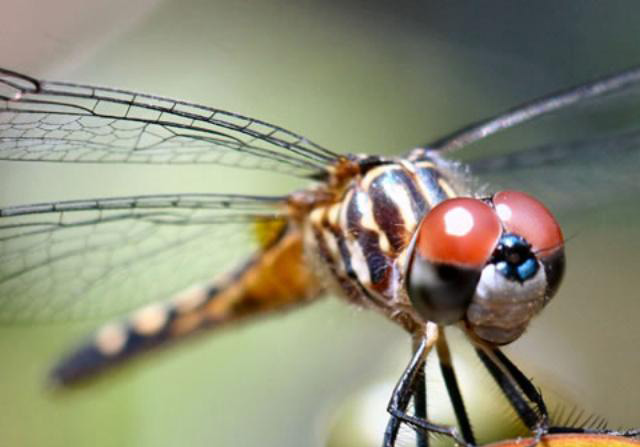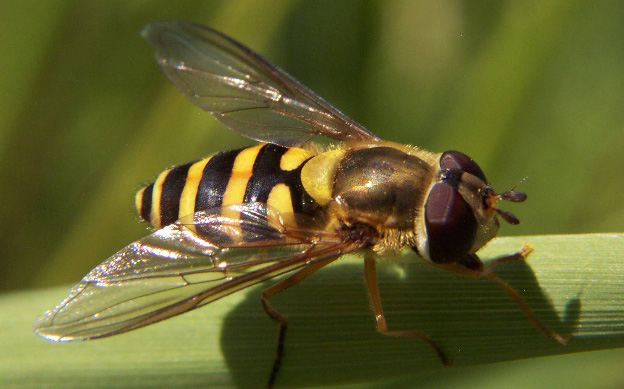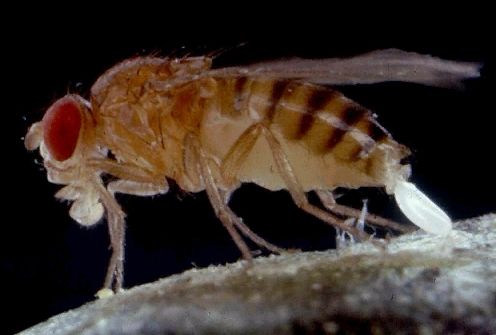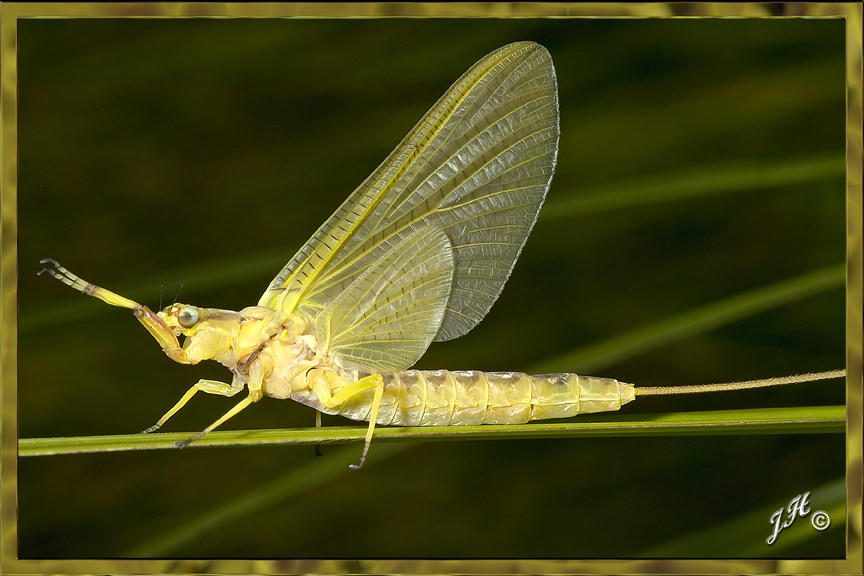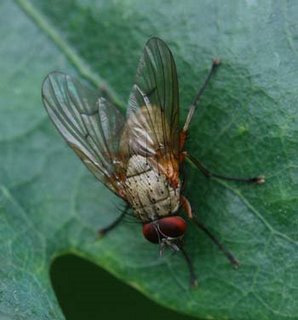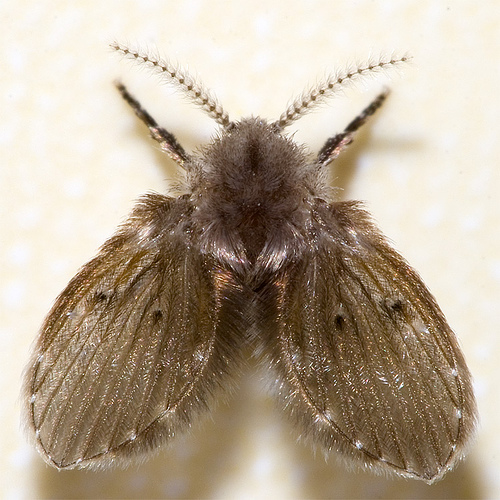ORDER: Diptera
FAMILY: Calliphoridae
The cluster flies are unlike blowflies such as the bluebottle/greenbottle, they do not present a health hazard because they do not lay eggs in human food as bluebottles/greenbottles. However, these flies are a nuisance because when the adults emerge in the late summer/autumn they enter houses to hibernate, often in large numbers; they are difficult to eradicate because they infest areas such as roof spaces and wall cavities. They are often seen on windows of rooms that are not used regularly.
Size, Shape and Colour: 6-7mm long with a wing span of around 10mm, a relatively big fly, with large reddish compound eyes, yellow hairs cover the thorax with irregular light and dark grey areas on the abdomen.
Biology: Eggs distributed favourably in leaf litter or damp soil, the larvae will hatch after a week and try to find earthworms, they then proceed to bore into the body to complete growth to full size then will work its way out to pupate in the soil. Depending on the weather 2-4 generations are possible each year. The flies will hatch from the pupae and contently live outdoors, they will only enter buildings when temperatures start to fall. This happens in large numbers between September and November.
Preferred Foods: The earthworm is an important food source to growth, but only to the larvae. The adult fly could be found feeding on nectar from flowers.
Habitat: Buildings favoured are south-west and south facing. They will enter buildings via small gaps or building fabric defects gaining entry to roof spaces, voids, cladded walls and even silos. They will cluster on the exterior of buildings in vast numbers then proceed to crawl into gaps. They will start to leave buildings in huge numbers in the warmth of spring.

